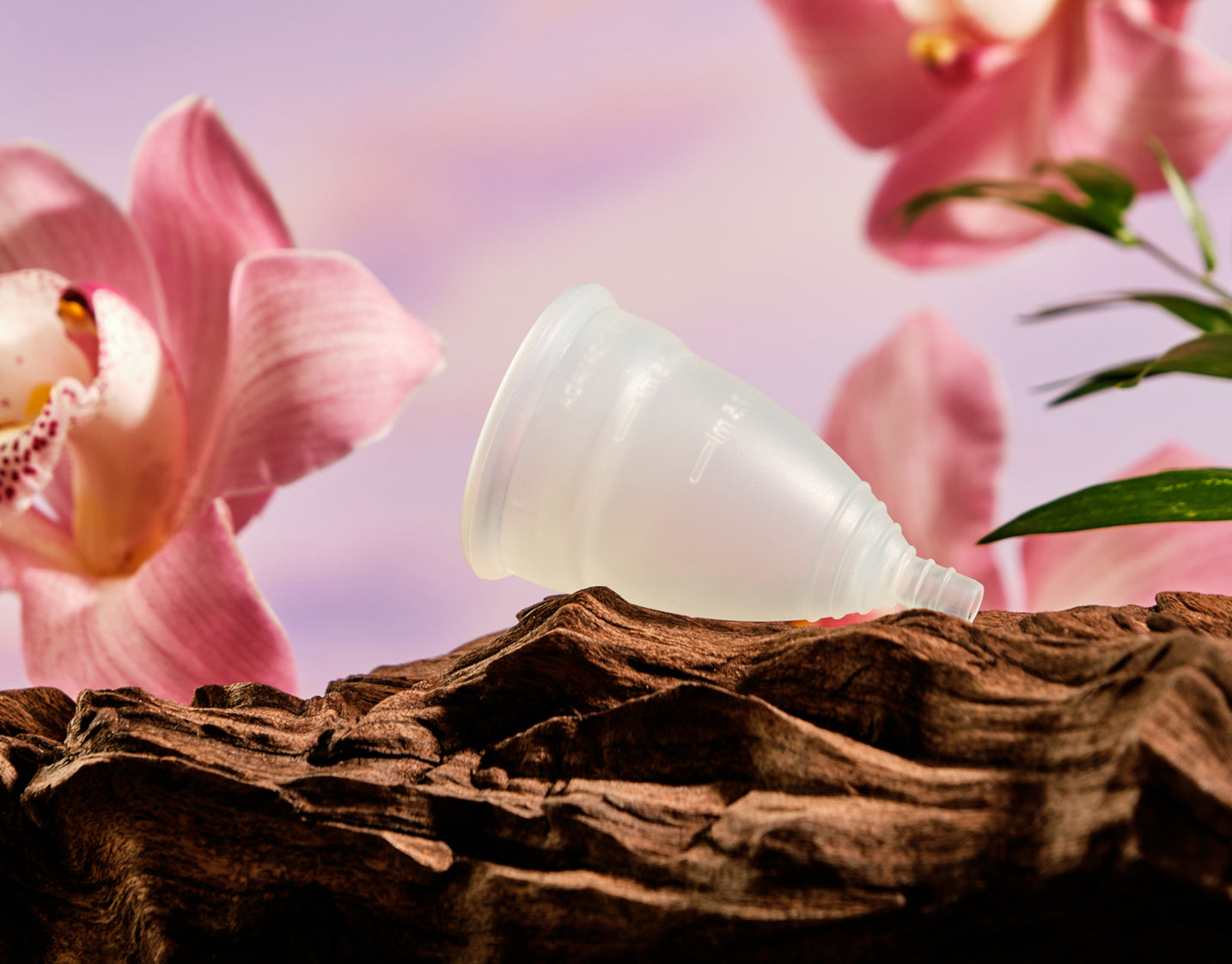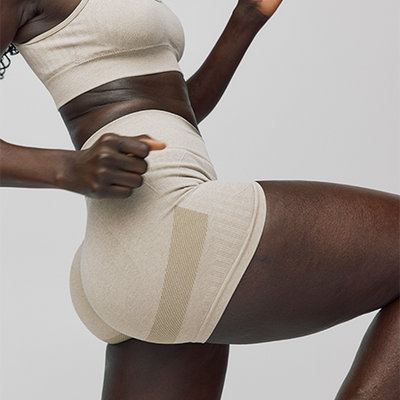
In this article /
We’re here to help and teach you all about menstrual cups for beginners.
Are you new to the world of menstrual cups? Maybe you keep hearing about them but aren’t sure what they are exactly. Maybe you’re thinking about making the switch to an eco-friendly period option, but are hesitant to give it a go. Or maybe you’ve already purchased a menstrual cup and now you’re just wondering how to get started.
As a leader in the menstrual cup category for over 15 years, we know exactly what you need to know.
What is a Menstrual Cup?
Menstrual cups are small, flexible, bell-shaped cups typically made from silicone that you insert into the vagina to collect period flow rather than absorb it (like tampons).
As simple as it sounds, there’s a lot more to it. If you’re still not sold on the idea, check out these reasons people make the switch to a menstrual cup, and why some are still hesitant to try it.
Selecting a Menstrual Cup
The DivaCup comes in three different sizes for different life stages:
- Model 0: You’re new to the world of periods or 18 years of age or younger.
- Model 1: You’re between the ages of 19 and 30 and have a medium menstrual flow.
- Model 2: You’re over the age of 30 and/or have a heavier menstrual flow.
However, just because you fit into one age group doesn’t mean that will necessarily be the right fit for you. If your DivaCup doesn’t feel right, connect with our Consumer Experience Team and they can help you.
Before Inserting a Menstrual Cup
One of the most frequently asked questions is how do you use a menstrual cup? The idea of using a menstrual cup is new to many. Although both internal, using a menstrual cup is very different from using a tampon. For starters, menstrual cups collect flow; tampons absorb.
How you insert a menstrual cup, and remove it, is way different, too.
The truth is for many first-time users, finding success with the DivaCup can take a few days, or even a few cycles. That’s okay. The good news is you’re in the right place to get all the information you need on menstrual cups.
Wash Your Menstrual Cup
When you first bring home a new menstrual cup, we recommend you boil it for 5 to 10 minutes before first use.
Then, before each use going forward, be sure to thoroughly wash the cup (and your hands) with warm water and the DivaWash or a mild, unscented, oil-free soap. If you have longer nails, be sure to clean them well and trim them back a bit.

For more information on how to wash your menstrual cup, check out this post on care and cleansing.
How to Use a Menstrual Cup
So, you just got your period, you’ve washed your menstrual cup and you’re ready to try it out. Here are some tips to help you get started.
Use Only During Menstruation
The cup is regulated for use only during menstruation, meaning a key element for successful insertion is menstrual flow. If you find yourself saying, “What’s the harm in practicing beforehand?”, stop! If the cup is inserted when not menstruating, the vaginal canal is often less lubricated, and the cup will not glide in as easy (and will be quite uncomfortable). The cup will also not open as easily which can lead to difficulty with removal and an overall unpleasant experience.
Relax
Stress can tighten your muscles and make for a more difficult experience. So, relax, you’ll get the hang of this in no time.
Get Comfortable
Get seated comfortably on the toilet, or while standing with one leg up on the bathtub. Either of these positions will make insertion easier.
Fold Your Menstrual Cup
There are two common folds people use.

Illustration of the U-Fold.
- U-Fold: Press the sides together between your fingers and fold it in half to create a U.
- Push-down Fold: Hold the top rim of the cup. With your index finger on the top rim, push the rim down into the center of the cup base to create a triangle.
Angle Your Menstrual Cup
Unlike a tampon, which is inserted upwards, the cup is inserted horizontally, toward your tailbone. Think of it this way, take your menstrual cup and place it on its side on a flat surface (such as a chair). Slide the cup back towards the back of the chair – this is a horizontal motion.
Avoid Lube
Although it may make sense, we do not recommend using any lubricant with a menstrual cup as it may compromise the integrity of the silicone and the vaginal environment. As the DivaCup sits in place for 12 hours at a time, if lubricant is used to insert the cup, the lubricant will also sit in the canal for the same time and may irritate the canal. We recommend using only warm water as this can help warm the menstrual cup. Warm water, combined with the lubrication of menstrual fluid, should help the menstrual cup slide in easier.
Rotation
Rotate the menstrual cup a full 360 degrees to ensure the seal is in place.
Be Patient
Similar to trying anything new, many people may experience a learning curve when using a menstrual cup for the first time. We recommend those who are new to menstrual cups to be kind to yourself and to be patient. For some people, it can take up to three months to find the best fit and comfort with the cup and is very common.
Removing a Menstrual Cup

The DivaCup sits low in the vaginal canal. Even still, the vaginal canal is only 3-4 inches long, so rest assured that there is no way for the DivaCup to get lost inside of you. When positioned correctly, the menstrual cup’s stem should sit about a half inch in the canal, with the labia covering the stem.
If you’re feeling a little wary about removing a menstrual cup, don’t worry, we have some helpful tips for that, along with this step-by-step guide:
1. Wash Your Hands
Always wash your hands before inserting or removing your menstrual cup.
2. Relax
Stress can tighten your muscles and make it removal more difficult. Similar to insertion, the key is to success with removal is to relax your muscles.
3. Get Comfortable
Just like with insertion, you can either sit on the toilet or stand with one leg on the bathtub. Gently separate your labia with your finger. Then using your forefinger and thumb, gently pull on the stem until you can feel the base of the cup.
If you can’t seem to find the stem, bear down with your abdominal/pelvic muscles (as if you are having a bowel movement) and gently insert your forefinger and thumb into your vagina until you can reach it.
4. Remove
Gently pull the stem horizontally until you can firmly pinch the base of the cup to release the air. Squeeze the cup gently, and angle it slightly sideways while moving it from side to side to release the seal as you remove it. When it is completely removed, hold the cup upright so that the contents remain inside the cup.
Important: As you remove the cup, allow the cup to collapse into a slightly folded shape using your thumb and four fingers, as this should help the top rim of the cup pass the vaginal opening with less discomfort.
5. Dispose
You did it! Now all you have left to do is dispose of your flow into the toilet or nearby sink and wash your menstrual cup.
When to Remove a Menstrual Cup
The DivaCup can be worn for up to 12 consecutive hours, depending on your flow. It should be emptied, washed and rinsed a minimum of two to three times per 24-hour period.
Menstrual Cup After Care
It is really important to clean the DivaCup every 10-12 hours with warm water and DivaWash or a mild, unscented, oil-free soap. Not cleaning the cup in between uses can lead to some unpleasant odors and irritation. Ensuring the four holes around the brim are clear will help ensure the seal is in place and against leaking.
For a list of ingredients to avoid, check out this blog.
When to Replace Your Menstrual Cup
Finally, the last thing you might be wondering is how long can a menstrual cup last.
As the DivaCup is a personal hygiene product, we recommend that you inspect your cup regularly for signs of deterioration such as a sticky or powdery film, severe discoloration or odor, etc. If you detect any of these signs, or if you experience irritation, we recommend you replace your DivaCup with a new one.
Depending on factors such as vaginal pH, how well and often the cup is cleaned, what cleansing agents are used, etc., the lifespan may vary. With proper care and cleaning, your DivaCup can last for several years.
Have more questions? Check out FAQs page or send us a message!























